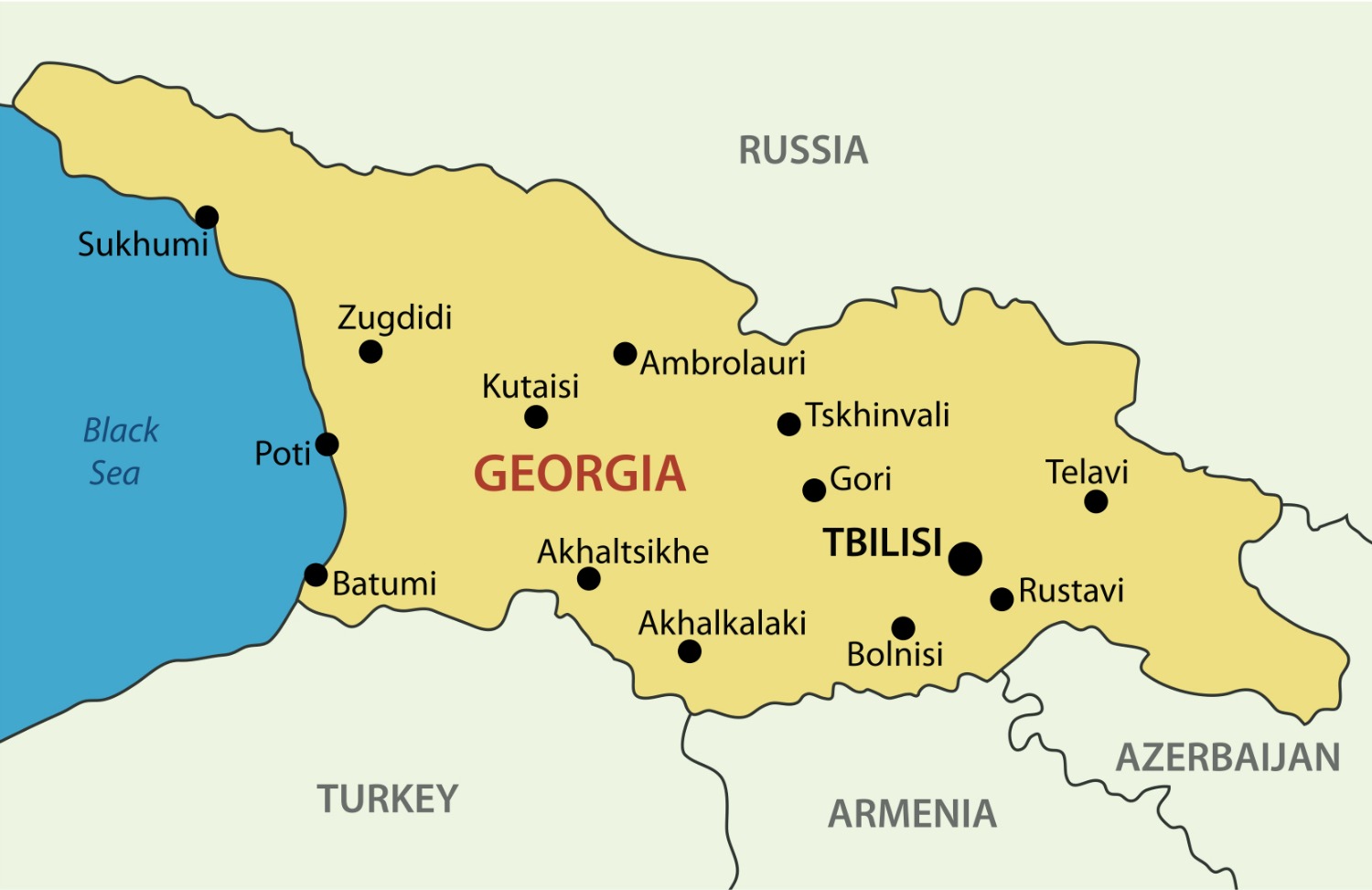Geographical location and climate
Georgia stretches on a land-border that is bounded in the east and west by two internal waters - the Caspian and the Black Sea, and in the north and south - the Great and the Small Caucasus. In its extent, the country measures 60,700 square kilometers, from which more than 40% is covered by the mountains, of which more than 4% represents the primeval forest, which in some places rise above 5,000 meters. In Svaneti, in the main ridge of the Great Caucasus, Shkhara (georg. შხარა) is the highest peak in Georgia at 5200 m. Kazbegi (georg. ყაზბეგი) is considered to be the third-highest mountain of Georgia with above the sea-level of 5047. A small mountain chain, the Likhi chain, connects the large with the Little Caucasus. This small mountain range marks the watershed between the Black Sea and the Caspian Sea. Likewise, the climate gap between west and central Georgia, between continental climate in the center of the country and the humid, subtropical climate in the west.
Landscape of Georgia
Georgia is characterized by contrasting nature and unusually great wealth of its flora and fauna. In the mountains of the Great Caucasus there is a unique plant world in a very small space. Among 6,500 plant species in the Caucasus, 1,600 are considered endemic. More than 40 percent of the country's surface is covered with forest, of which more than 4 percent is impenetrable forest. There are 400 different tree species, of which 60 counts as endemic and 60 are considered to be endangered species all over the world.
The country is characterized by unique nature reserves with unique foliage and conifers, including endemic plant life, which are native to this area. Almost throughout the country there are wine fields, with about 500 different grape varieties.
In Georgia there are mineral resources of almost all kinds: rivers and lakes with about 160 species of fish. It has over 1400 mineral springs, of which about half are thermal springs, artesian wells.
The Fauna is diverse and regionally very different from the plant world. In the mountains there are stone blocks, chamois, roe deer, gazelles and wild boars. Similarly, there are a variety of bird species, about 330.
No one can resist the magic of the diverse and exciting mountain world that unites all forms from wildly rattled to gently vanished, no matter from where one feeds on the land and which of its regions one explores.

